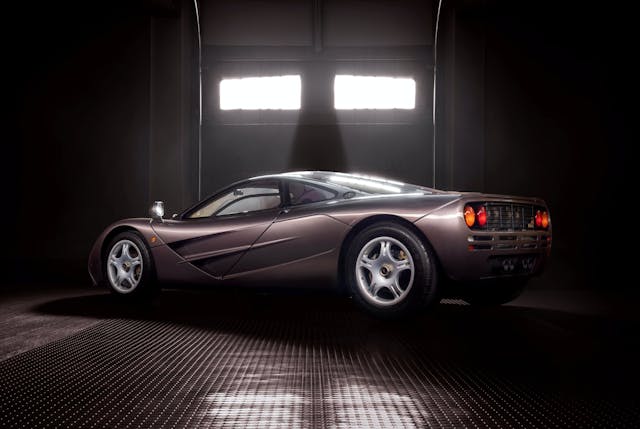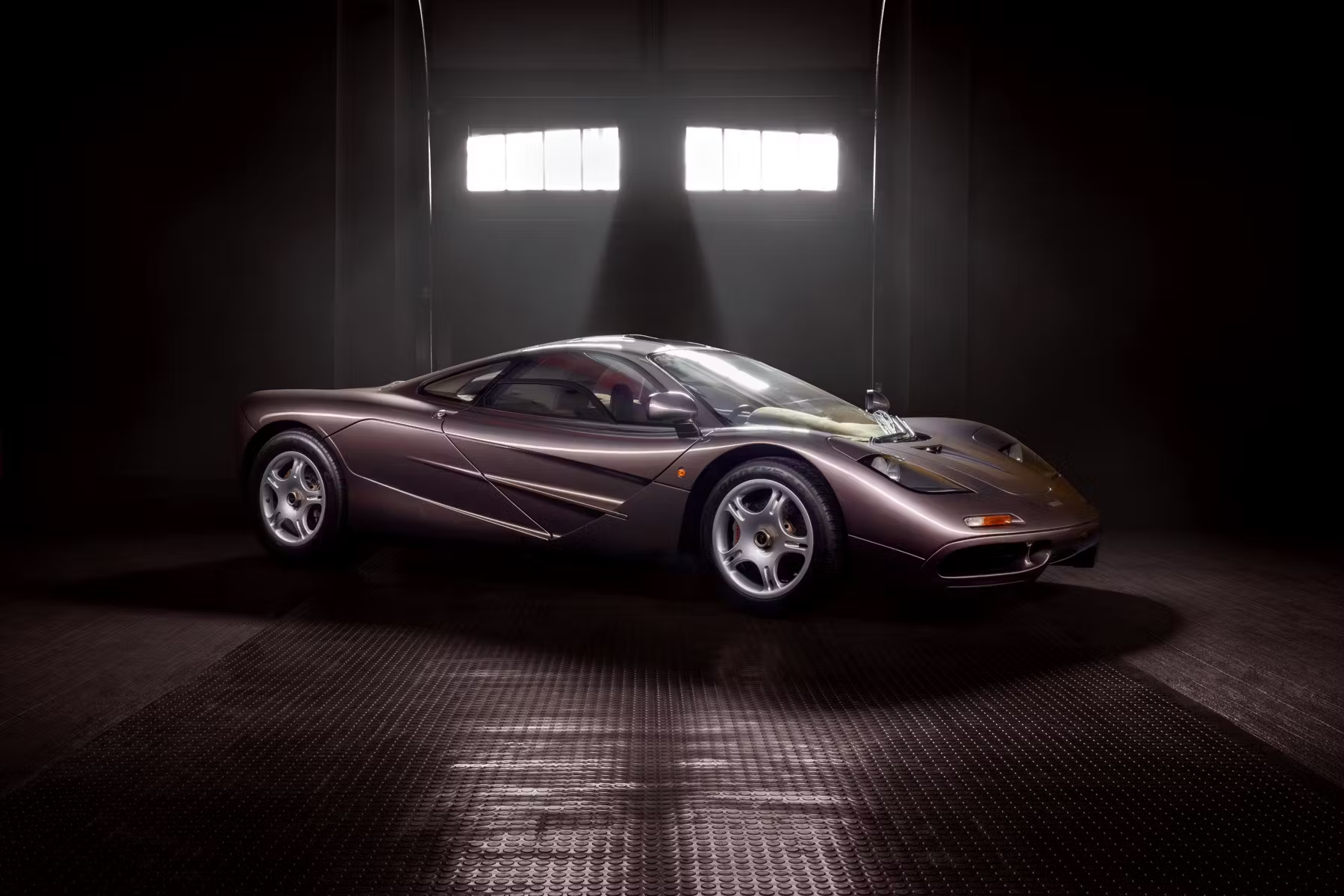Media | Articles
The McLaren F1 is the eight-figure car of the future
Roughly 35,000 vehicles sold at classic car auctions last year. The most expensive of them, and one of only three cars to sell for eight figures at auction anywhere in 2021 was a brown-on-brown 1995 McLaren F1 that brought $20,465,000 at Gooding & Company’s Monterey sale last August.
That’s a lot of brown for a lot of green—a world record price for the model at auction (others may have sold for more privately) and just shy of its condition #1 (“concours”) value in the Hagerty Price Guide at the time of sale. Although the car was, as you’d expect, exceptional, it gives us a sense as to what the climate is in the upper stratosphere of the classic car market.

The first thing it tells us—not that we or anyone else needed to be told this—is that McLaren F1s are very “in.” We’ve spilled a lot of ink on the soaring popularity of 1990s and early 2000s supercars, but the F1 is something different altogether. It bristles with the most advanced materials the early ’90s had to offer, and it is brilliantly engineered, configured in a radical triple-seat layout, and able to reach a top speed that no other street car could match for many years. Oh, and McLaren only ever screwed together 106 F1s of all types, race cars included. The original sticker price was somewhere around $800,000 when McLaren unleashed the F1 way back in 1992. Big money at the time, but that number looks like an absolute steal today.
That’s because the F1’s legend and status have only grown since then. Today, this king of the 1990s is one of the most valuable cars in the world. F1s officially became eight-figure cars in the mid-2010s, and their condition #2 values in the Hagerty Price Guide rose 497 percent from 2011-21. It’s a big jump, but Gordon Murray’s magnum opus still has plenty of room to grow. Consider another, more established god-tier collector car – the Ferrari 250 GTO, which is worth between $36M and $70M in the Hagerty Price Guide. Despite their age difference, the two have so much in common (dominance on-track, very limited production, apex status for the era, naturally aspirated V-12s, usability, and active/exclusive owners’ clubs) that it’s easy to view the Ferrari and the McLaren in a similar light and as cars that could carry similar values in the not-too-distant future.
In the nearer term, F1 appreciation is evident even if you narrow your focus to just Monterey: In 2019 the high sale of the week brought “just” $19.805M, even though it was arguably a more special LeMans-spec car.
Marketplace
Buy and sell classics with confidence

That said, the F1 from Monterey 2021 is plenty special. Chassis number 029 (and Gooding Lot 29, by the way) is one of the most well preserved and lowest mileage examples around, and it is the only one finished in “Creighton Brown.” Now, Creighton Brown may not exactly be a household name, but Mr. Brown was a McLaren shareholder/commercial director for the company during the F1’s formative years, and an important enough chap to get a color named after him. It’s not just brown on the outside, either. The interior is finished in Light Tan and Dark Brown.
Chassis 029 first went to a private collection in Japan, until the consignor moved it to the United States, and in the last 25 years it has covered just 390 km (242 miles). As you’d expect on an eight-figure car with a gold-laden engine bay, it also came with its original tool chest, fitted luggage, and TAG Heuer 6000 McLaren F1 chronometer.
In other words, it’s just about perfect, which is basically what buyers of eight-figure cars at auction now expect. You may think that’s always been the case. Not really. Wind the clock back five or six years, and you’d have seen euphoric, competitive bidding at the auctions on the Peninsula.
Around 2019, the party ended. Be it because tax regulations made it harder to shelter money in expensive cars, because profit-focused speculators moved on to more lucrative investments, or simply because people got savvier, very expensive cars became very hard sells at auction if there were any questions about their quality or provenance. So much so, that it seems many owners of eight-figure cars have been keeping out of public sales altogether, preferring to offer their prized possessions privately. The bull market of 2021 may convince more of these sellers to come out of the woodwork in 2022, but we expect bidders to remain selective. We also expect to see more McLaren F1s.



